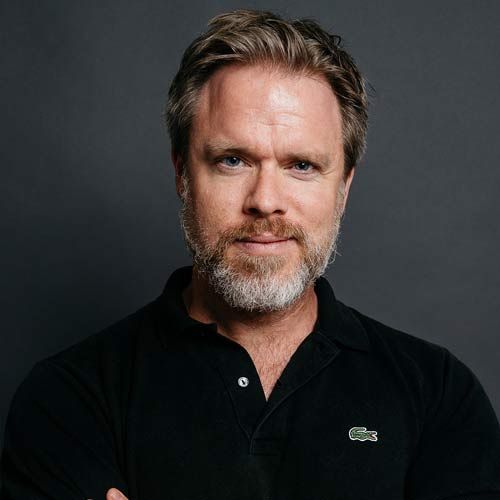Warning Without Response: Why Early Warning Fails, and How to Turn Foresight Into Prevention

A dangerous paradox has emerged. Interstate tensions and civil conflicts have surged to levels not seen since 1945. In 2024, there were over 60 armed conflicts, a third more than ten years earlier, and 74 percent more than the average during the early 2000s. This is occurring while overseas assistance budgets are dramatically shrinking and humanitarian, development, and peace support missions are shuttering. In 2025, the humanitarian sector alone experienced a USD 32 billion funding shortfall.
With geopolitical competition intensifying, the United Nations (UN) has noted that contemporary armed conflicts are “less responsive to traditional forms of resolution.” And with multilateral institutions facing multiple challenges, the international system has limited capacity to absorb new crises. It is more important than ever to find ways to scale up early warning and early prevention approaches that get ahead of violence, and address risks while they are still manageable, and the associated costs are still affordable.
Notwithstanding a smattering of success stories, measures to anticipate and prevent conflict have repeatedly fallen short. One reason for this is that early warning systems (EWS), even where robust, rarely catalyse timely political action and are seldom connected to a suite of actions specifically tailored to conflict prevention. As a result, a “warning-response gap” has emerged, missing earlier, more affordable, and more effective opportunities to tackle tensions before they escalate into conflict.
The international architecture tasked with supporting national and local actors to prevent and manage conflict is stretched and being asked to do more with less. National decision makers and bilateral and multilateral donors, limited by asymmetric information and resources, typically demand more data and certainty before acting. The urgency of existing crises limits their willingness and capacity to respond to places facing abstract “risks.” The speed and scale of early engagement are further diminished by ambiguous mandates, siloed institutions, unclear triggers for response, and sporadic cross-sector incentives, both from domestic actors and their international partners.
Sometimes the warning-response gap is purely logistical. That is, in many places where data indicates that conflicts are on the verge of erupting, the operational capacities to respond quickly are simply not in place. In addition, EWS may detect the early onset of violence without providing a clear understanding of its underlying causes, making it difficult to determine what actions should be taken.
For these and other reasons, efforts to prevent and respond to conflict risks are often delayed until the costs of inaction are impossible to ignore. Part of the challenge is admittedly linked to cognitive biases. Decision-makers often fail to acknowledge the threat of violence until it visibly impacts existing humanitarian, developmental, and private sector activities, by which time the opportunity for prevention has already passed. A key question, then, is how to overcome all of this friction to better connect data-driven prediction with upstream preventive action? Notwithstanding these structural challenges, there are at least three reasons to be optimistic that we can make the pivot to prevention.
1. Prevention delivers returns on investment
Beyond the moral imperative, the business case for focusing on conflict prevention is credible. Long considered a net “cost,” investment in conflict prevention could become a net “benefit.” For example, a 2024 International Monetary Fund (IMF) paper entitled “The Urgency of Prevention” found that for every USD 1 spent on prevention, there are between USD 26 to USD 75 returns in countries yet to experience conflict, and as high as USD 103 in countries already affected by it. Put simply, investing in prevention limits the negative impacts of violence and the costs of response.
2. Global commitments are aligning behind prevention
The political momentum for conflict prevention is considerable. Several international policy frameworks explicitly call for conflict prevention, including the Pact for the Future, the New Agenda for Peace, and the European Union (EU)’s Global Strategy. In particular, member states’ commitment to National Prevention Strategies presents an opportunity for all countries to strengthen their capacities for peace and resilience. The World Bank’s Prevention and Resilience Allocation and the UN Development Programme (UNDP)’s Crisis Offer emphasise avenues to support those efforts. Multilateral development banks (MDBs) and Development Finance Institutions are likewise integrating conflict sensitivity into their risk frameworks and endorsing peace-positive approaches and frontier market investments attuned to conflict risks.
3. Early warning systems enter a new era
The evolution of EWS has undergone significant transformation over the past three decades, moving from centralised, elite-focused forecasting tools to increasingly sophisticated, multi-layered platforms incorporating artificial intelligence (AI) and real-time decision-making frameworks. Regional organisations, particularly in Africa, pioneered continental mechanisms like Conflict Early Warning Systems (CEWS) and Conflict Early Warning and Response Mechanism (CEWARN), while global initiatives such as Integrated Crisis Early Warning System (ICEWS), the Violence & Impacts Early-Warning System (VIEWS), and Armed Conflict Location & Event Data (ACLED) expanded the technical capabilities of data collection and predictive modelling. These systems evolved from purely analytical and predictive models towards community-based and participatory platforms, reflecting a broader shift to localised, people-centred approaches. The most recent advancements, what some call the fifth generation, integrate deep learning and high-resolution data to generate actionable insights for decision-makers in real-time crisis scenarios.
Despite notable advancements in narrowing the warning-response gap, several challenges remain. While EWS are getting better at identifying and communicating social protest and violence, they often struggle to capture underlying drivers of violence (e.g., changes in horizontal inequality, food price shocks, deteriorating trust in state institutions). EWS are also often activated too late, when a crisis is already imminent and de-escalation is the only viable option. Indeed, early warnings often fail to trigger timely or adequate action due to limited political will, institutional inertia, and fragmented accountability. What is urgently needed is not just better tools, but a fundamental evolution in how conflict prevention and early warning are prioritized, governed, and resourced. The six shifts outlined below offer a pathway to close the gap between warning and response, and to foster more timely, coordinated, and sustained action.
- Decision-makers and practitioners must rethink the geography and dynamics of conflict. Existing early warning and response systems typically concentrate on a subset of about 40 “fragile” and “conflict-affected states.” This is too narrow. Modern international and internal conflicts and their risks are dynamic and networked, fuelled by climate stress, transnational crime, corruption, and hybrid geopolitical warfare. A narrow focus on traditional geographies and drivers of fragility risks missing early signs of instability in places that require attention, as well as violence spikes related to crime and interpersonal violence that may not fit the traditional definition of conflict, but are nonetheless devastating and capable of being predicted. Broadening the consideration of conflict risk could permit equally broad prevention and protection responses.
- A more strategic and politically intelligent approach to preventive action is urgently needed. Decades of early-warning research have honed predictive tools, but many of these still remain technological promises out of sync with political realities. This disconnect reflects not a problem of weak evidence, but action aversion connected to structural issues of misaligned incentives and low risk tolerance. What is needed are braver and purposeful political economies of prevention driven by anticipatory governance and mechanisms that align political foresight with operational capacity. This includes establishing clear thresholds for action, shared interagency protocols for response, and incentivizing institutional coordination and cooperation across the humanitarian, development, peace, and private sectors. For donors, it will be crucial to allocate flexible, multi-year funding for prevention, including, potentially, prevention trust funds.
- Prevention must be reframed not only as an ethical imperative but as an investment strategy. Prevention is often treated as a cost center, something donors are asked to support without any meaningful return. But the economic case is compelling. Preventive action has clear strategic benefits: it limits the need for emergency response, reduces displacement, and protects long-term development gains. It is also a powerful form of risk management for governments, investors, supply chain managers, insurers, and infrastructure planners seeking to protect their interests in an increasingly unstable world. By engaging these different actors as partners in prevention, early warning can shift from an economic burden to a tool for strategic planning. It can also attract different investors into the prevention space, so that the onus is not on governments and overseas assistance.
- Prevention should be embedded in longer-term national strategies. Short-term EWS are adept at flagging threats during elections, potential increases in protest, and other potential flashpoints for organised violence. But without sustained structural reforms such as inclusive politics, rule of law, economic equality between groups, and resilience to climactic shocks and stresses, those risks will linger and return. Prevention cannot be viewed as a one-off exercise. It must be hardwired into national development and prevention plans, regulatory frameworks, and financial instruments. This requires donor support not only for international interventions but first and foremost for nationally and locally-led prevention strategies that can address root causes and build long-term resilience.
- Advancing innovation at the frontier of early warning is essential to keep pace with rapidly evolving risks.Not surprisingly, EWS used by international development agencies lag far behind those in the defense and intelligence sector. Platforms like Palantir’s Gotham already integrate deep-learning forecasts with decision trees that recommend tailored responses. These “fifth-generation” systems are costly and exclusive, yet they offer a glimpse into the future of anticipatory governance. If this remains confined to defense ministries and big tech, humanitarian and development actors will fall further behind. Open-source, interoperable platforms built with ethical safeguards, along with cross-sector partnerships to share best practices, are all part of delivering predictive power accompanied by prescription. Even as the world rushes towards AI, EWS, and preventative responses, it would benefit from complementary models at the country level that reveal and monitor the granular risk and protective factors driving conflict at the sub-national and local levels.
- The shift from “Superman” to “sprinkler system” approaches must continue. Prevention efforts by international partners have historically relied on top-down diplomatic interventions. These roles remain important for securing elite bargains, but they make insufficient use of national and local knowledge and capacities. Resilience emerges at street level, from municipal councils, peace committees, women’s and youth groups, church leaders, and local businesses, that are often best placed to recognize early signs of instability and to act quickly and credibly. Yet they are frequently under-resourced, disconnected from one another, from formal EWS, and from strategic decision making. Investing in community-level tools and prevention networks that feed local data upwards to shape more effective response strategies is a vital part of closing the warning-response gap.
The six recommendations above can help shift early warning from prediction to action. They can also help reframe conflict prevention as a productive investment in resilience. Moreover, they can support the decentralization of the authority, agency, and accountability of early warning and conflict prevention to more dynamic, system-wide constellations of state, private sector, civil society, and international actors.
There is a growing appetite to reimagine early warning and conflict prevention, particularly in a global context of deepening geopolitical volatility and funding scarcity. The basic architecture to scale up investment exists. Over the past decades, UN Secretaries-General from Boutros-Ghali to Guterres have championed prevention, institutionalized foresight units, and mainstreamed early-warning tools. Indeed, there is a broad ecosystem of local, national, regional, and international conflict prevention frameworks. The challenge ahead is not about invention; it is about implementation.
The stakes could not be higher. In 2025, major systemic risks are accelerating in pace and scale, from climate shocks and stresses to technological transformation, all of which are likely to intensify destabilization in low-, middle-, and upper-income settings alike. But without a revitalized approach, early warning could become yet another unfulfilled promise. To be sure, conflict prevention will never be free of uncertainty and push-back. But in a world of global and cascading risks and constrained resources, it offers one of the few strategies capable of mitigating threats before they metastasize. It is time for conflict prevention to evolve from niche into norm, and from silo into system.
Stay Connected
Subscribe to our newsletter and receive regular updates on our latest events, analysis, and resources.
"*" indicates required fields


